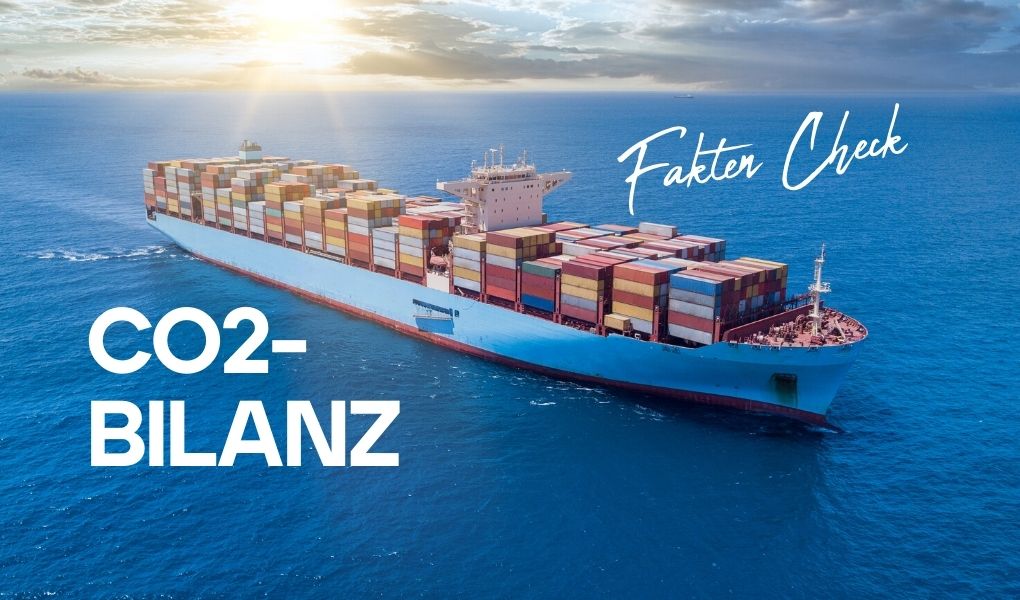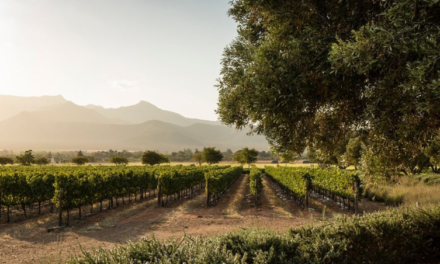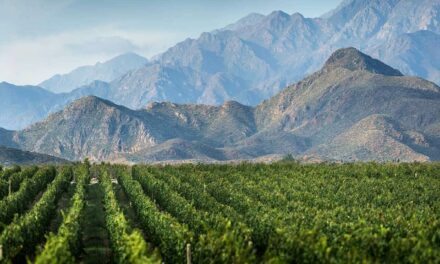CO2 balance for wine
The fact check
If you are an occasional wine drinker, you know a lot of European wines. No wonder, since they are just around the corner and “local consumption” or “no food waste” are new societal trends. Because everyone wants to do something good for the planet and become as green as possible, but unfortunately, the omnipresent reputation of European wines, if you look at the wine lists of Swiss restaurateurs, doesn’t help either. This is because the CO2 emissions for the transport of these wines, from the producing country to Switzerland, are in some cases much higher than from South Africa, for example.
We at KapWeine have researched and put the facts on the table!
Europe versus overseas, respectively – cleaners versus underdogs
But let’s start from the beginning and compare two real-life examples together. For Europe, one of the best-known wine regions in Spain, the«Ribera del Duero», is competing. This wine-growing region is located about 170 kilometres by car north of Madrid and about 1,500 kilometres by car from Zurich.
The challenger from overseas is in South Africa, to be more precise, from the well-known wine-growing region of «Stellenbosch». This is about 40 kilometres by car from Cape Town’s Transnet Port Terminals Administration and about 9,050 kilometres by air from Wädenswil/Zurich. The exact mileage of the cargo will be calculated together below.
What does a typical wine delivery look like?
A trader or importer (like KapWeine) orders its wines from abroad. The wine delivery must therefore be transported from A to B, whereby time, costs and CO2 balance should be within reasonable limits. According to today’s international logistics standards, a 75cl wine bottle comes in a 6-pack and is stacked as a Euro pallet, loaded in larger quantities in containers. Thus, most pallets are loaded with 480 or even 600 wines. Depending on the volume to be shipped, the optimum must find the maximum delivery quantity in a container. The aim is to use as much surface area and space as possible without exceeding the total weight of the permissible container weight.
Now you are probably wondering how many bottles of wine can fit in a container and where the limit is? But let’s not make life more complicated than it is and leave it at a simple calculation example with the following values.
One wine delivery equals:
- 40″ container with 12.1 loading metres
- 24.5 tons weight
- approx. 26 Euro pallets
- approx. 15’000 wine bottles à 75cl
Berechnung der Co2 Bilanz für beide Weingebiete
Thanks to modern tools, we are now very well able to calculate the Co2 values for a wide range of products. For example, in the food sector, we are increasingly seeing a Co2 traffic light that provides us with information about the conditions. Using the website carboncare.org, we will now contrast the two wine counterparts. Do you already have an idea who the winner will be?
Spain– Ribera del Duero
Starting with our Spanish wine-growing region «Ribera del Duero», a 40″ container with 24.5 tonnes is loaded onto a truck and transported to Zurich city. As can be seen on the following screenshot, the air distance of 1147.46 kilometres is used as a basis, whereby the Co2 emission values are a proud 1447.81 kg (TTW = Tank to Wheel), which refers to the vehicle, i.e. the lorry. However, we are interested in the value of 1759.86 kg (WTW = Well to Wheel), which means that all steps were also taken into account for the fuel extraction.
Now we consider the missing car kilometres compared to the distance as the crow flies. In the beginning, we had calculated about 1’500 car-kilometres. Thus, 352.2 car-kilometres are still missing in the calculation. In a simple rule of three, we have to add 540.69 kg Co2 (WTW). Thus we arrive at a Co2 total of 2300.551 kg (WTW). This corresponds to 0.153 kg Co2 for a bottle of wine.
Ribera del Duero (Spain) - Zurich (Switzerland)
2300.551 kg CO2- Total (WTW)
0.153 kg CO2 pro 75cl Bottle wine
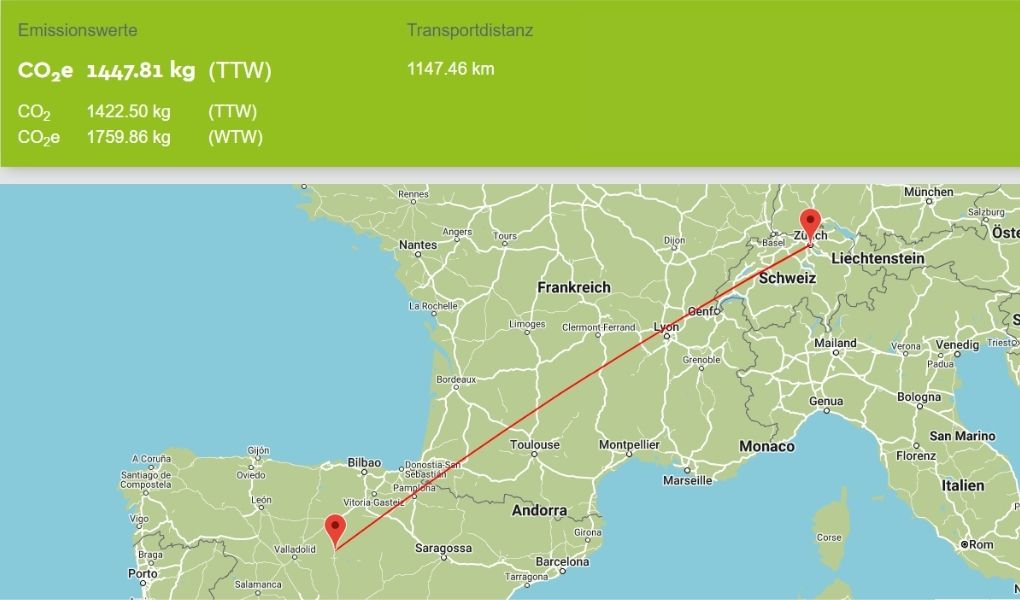
Now this was the easy part of our comparison. I hope you all came along, because it gets a bit more complex.
South Africa– Stellenbosch
What was still easy to calculate by European standards is now more complicated because of the greater distance and the complex transport route. And for those who are now thinking that air-line kilometres were mentioned at the top of the article, we are not South American drug barons from the 80s who would dare to fly in the wines, let alone bear the costs. South Africa is already green, organic and sustainable in its production, and we are sticking to these values with CapeWine too! But let’s come back to the transport route and the Co2 balance.
Our Stellenbosch container travels by truck the first 40 kilometres to the port in Capetown. This corresponds to 50.78kg (TTW) and 61.72kg (WTW).
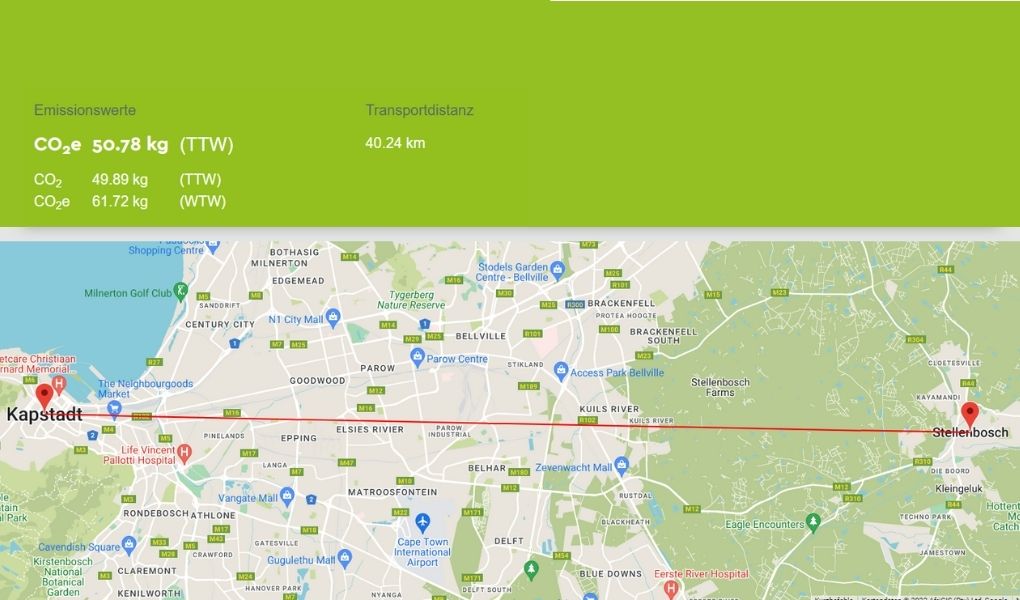
The second transport route is from Cape Town via MSC container ship to Antwerp (Belgium) to the European cargo port. This corresponds to a distance of 11,378.13 sea kilometres and costs 1583.38 kg (TTW) or 1,745.06 (WTW). The crossing takes about three weeks.

The third station comprises the goods train from Antwerp (Belgium) to Basel Stadt. This corresponds to a distance of 609.69 kilometres, with the Co2 balance melting away. 0.00 kg (TTW) and 69.15 kg (WTW). Here we see once again that it doesn’t get any greener than by train!

In the fourth and last leg, our container is loaded onto a truck again for transport from Basel to Wädenswil. Here we have a distance of 88.96 kilometres with 112.24 kg (TTW), respectively 136.43 kg (WTW).
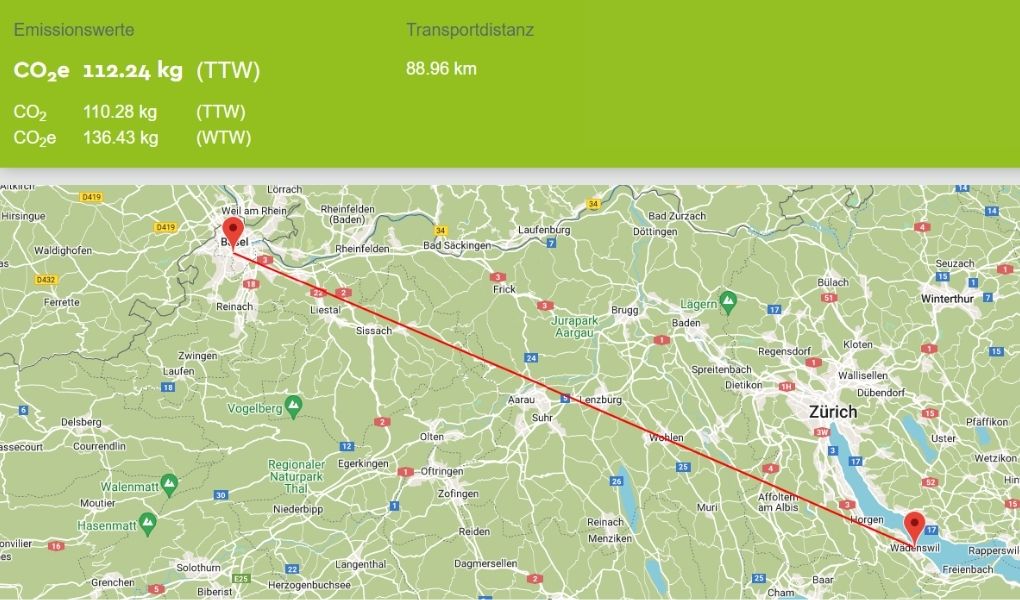
If we sum up all the values according to WTW, we get a Co2 emission of 2,012.360 kg (WTW), which corresponds to 0.134kg Co2 (WTW) for a bottle of wine. Would you have thought that?
Stellenbosch (South Africa) - Wädenswil (Switzerland)
2012.360 kg CO2- Total (WTW)
0.134 kg CO2 pro 75cl bottle Wein
Wine from South Africa Whoo! Europe Fie!
Not everything that comes from the region or from Europe is necessarily greener! Products from overseas can also keep up well and even be better in the carbon footprint.
90% less CO2
A bottle of wine from Stellenbosch (South Africa) needs 90% less CO2 than one from Ribera del Duero (Spain).
When you consider that our South African wine has travelled over 10,000 kilometres more, this is an amazing achievement. Here again for comparison.
Ribera del Duero → Zurich
- 1’500 Kilometres
- 2’300.551 kg Co2 (WTW)
- 0.153 kg Co2 (WTW) per bottle of wine
- 1.533 kg Co2 (WTW) pro Kilometres
Stellenbosch → Wädenswil
- 12’116.78 Kilometres
- 2’012.360 kg Co2 (WTW)
- 0.134 kg Co2 (WTW) per bottle of wine
- 0.166 kg Co2 (WTW) pro Kilometres
So we can appeal to everyone to also look behind the scenes. Because South Africa may be far away, but it clearly has a better record than many wines from Europe.
Why are faraway, unknown places, and especially the African continent, badly spoken of?
Unfortunately, people tend to be sceptical about the unknown, the new and the foreign. The unfamiliar is usually scrutinised more critically than the familiar and often smiled. After all, it can’t be that good, at least that’s what we expect.
You are welcome to conduct a little experiment and ask people what the first thing they associate with Africa is? Most of the time, you will hear the following from people who have never travelled to Africa: the wild continent, the black continent, epidemics, houses made of straw, refugees etc. Rarely will you hear that the country is beautiful with its landscape or that you can get top quality wines there? It is a pity to see that despite globalisation, we still think in the short term and don’t want to admit certain things because there is so much to discover!
But back to wine and the further fact that South Africa, with the barren and oldest soils in the world, is predestined for quality wine production. Where in Europe, the fallacy was for a long time that agriculture with chemicals, pesticides and high-tech technical machines leads to better harvests, now comes the turnaround after more than 100 years of the agricultural economy. Soils need to be more natural and ecological again, as they have often been overused and sometimes still contain toxic substances.
Here, in particular, South Africa is a prime example of biodynamic, ecological and sustainable agriculture. Even the irrigation comes from recycled wastewater, and infestations of insects are counteracted with other insects and natural remedies. In addition, a lot is done for the workers’ families, such as pensions from direct sales or schooling and housing opportunities.
If we consider all these facts and, of course, the Co2 emissions for our quality wines, we should all rethink and give more wines from overseas, like a South African wine, a chance.
PS:
Consuming locally, organically and seasonally is good. But please don’t forget that with other goods like a T-shirt (fast fashion) or a smartphone with rare precious metals and the Cobald for electric car batteries, it would also have to be questioned.
A dream lived
The Coop newspaper also reports on historic wineries, such as Boekenhoutskloof with the most famous wine «The Chocolate Block» from South Africa.
Further Co2 transport comparisons from Europe to Zurich City Switzerland by truck:
Germany
- Wiesbaden (Riesling) 442 km = 678.315 kg Co2 (WTW)
Italy
- Merano (Bolzano) 281 km = 430,886 kg Co2 (WTW)
- Piedmont 378 km = 580.328 kg Co2 (WTW)
- Florence (Chianti) 563 km = 864,000 kg Co2 (WTW)
- Linguaglossa (Catania) 1’571 km = 2’410.956 kg C02 (WTW)
France
- Bommes (Médoc): 1042 km = 1’597.681 Co2 (WTW)
- Saint Cyr sur Mer (Provence) 801 km = 1229.100 kg (WTW)
Portugal
- Horta das Figueiras 2185 km = 3351.139 kg Co2 (WTW)
Austria
- Wachau 685 km = 1050.591 kg Co2 (WTW)
Useful tools for this post
- For all those who want to calculate Co2 emissions: https://www.carboncare.org/co2-emissions-rechner.html
- For all those who want to calculate a rule of three: https://www.mathepower.com/dreisatz.php
- For the kilometre calculation of the sea route: https://www.searates.com/de/services/distances-time/
- For the kilometre calculation of the airway: https://www.luftlinie.org/W%C3%A4denswil/Cape-Town

